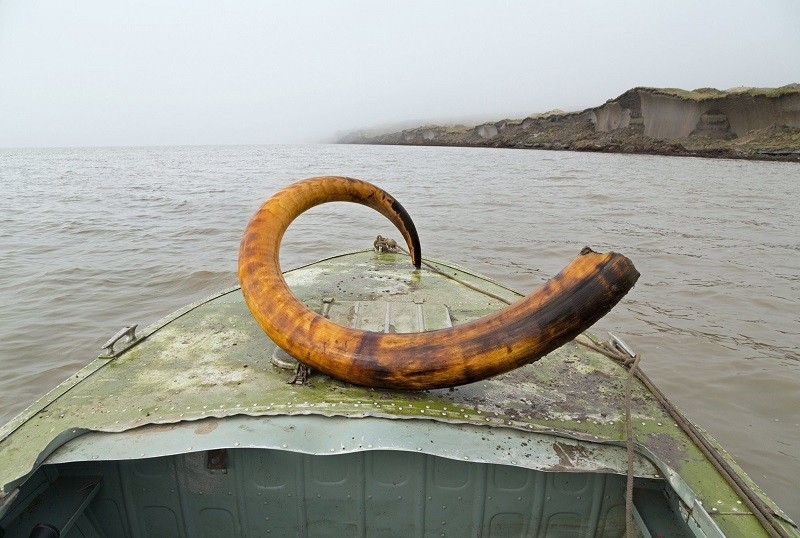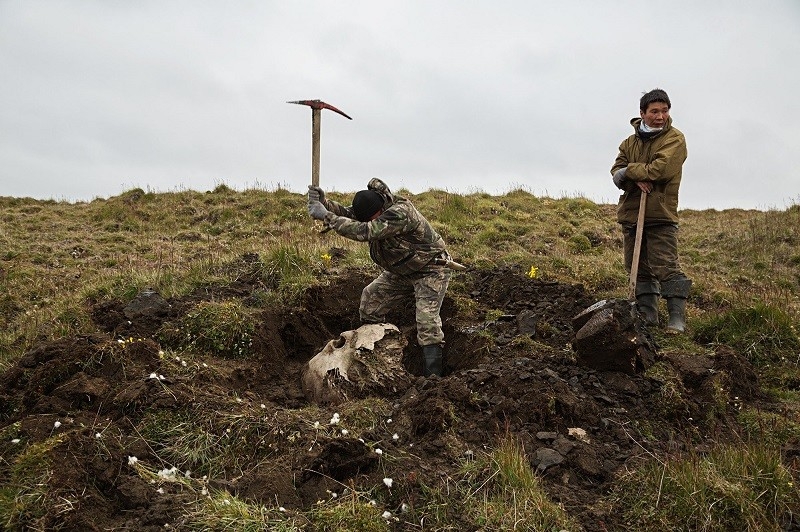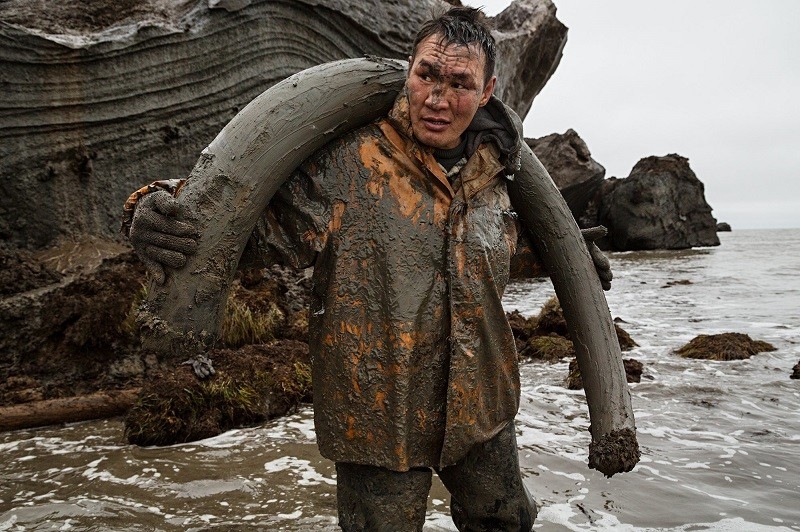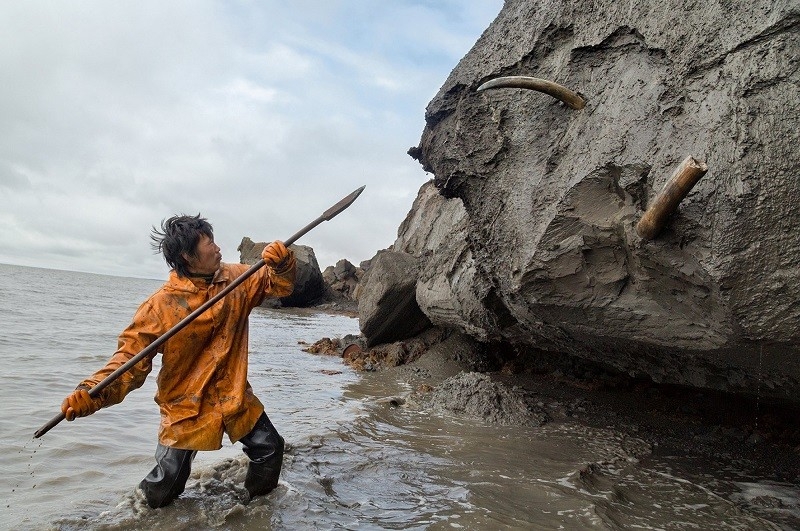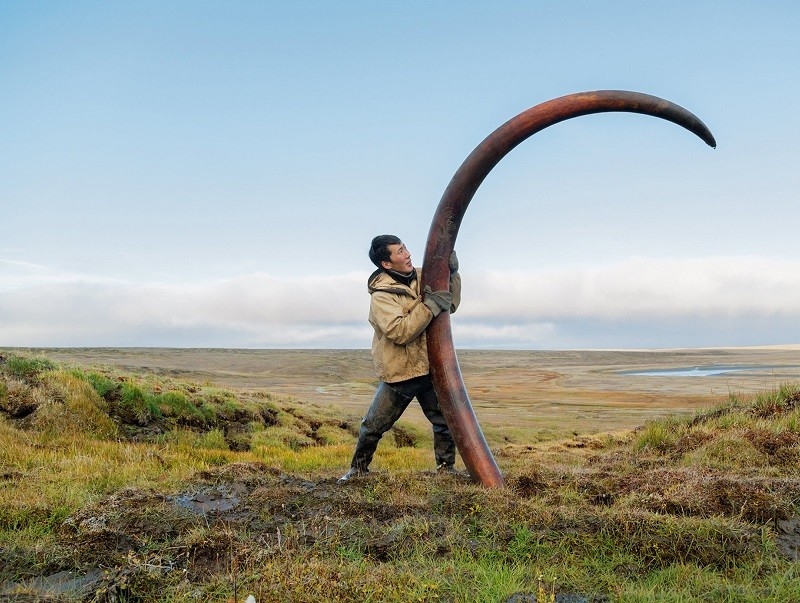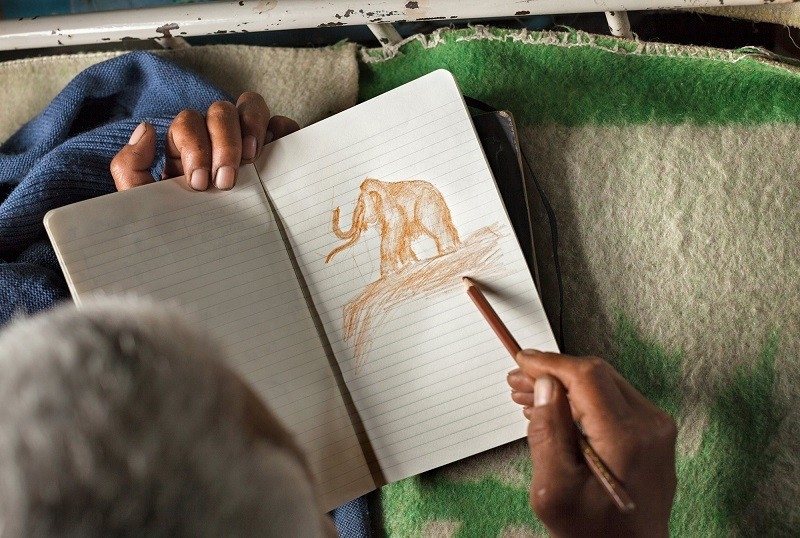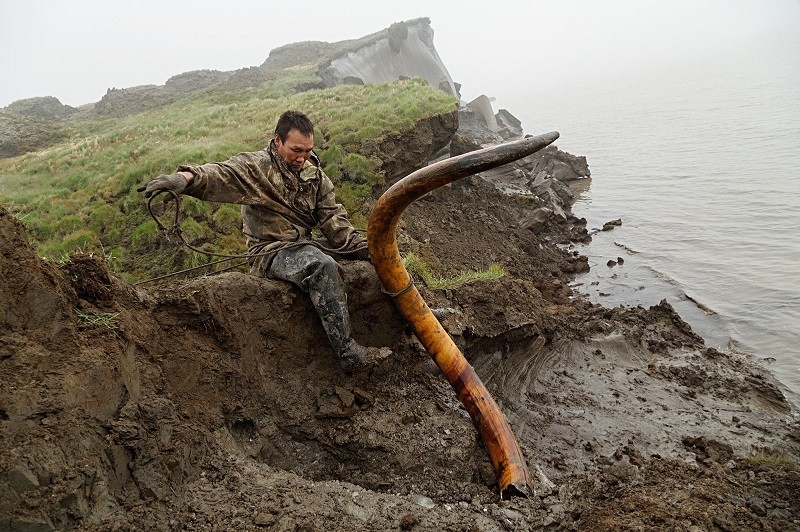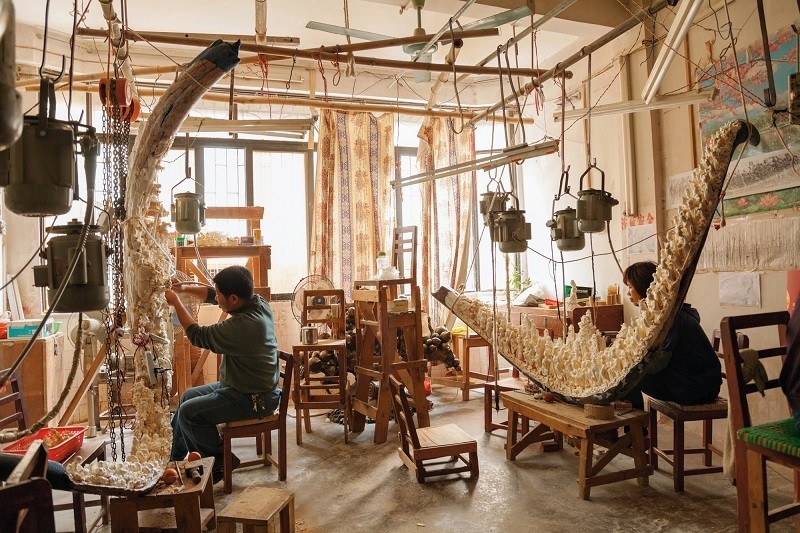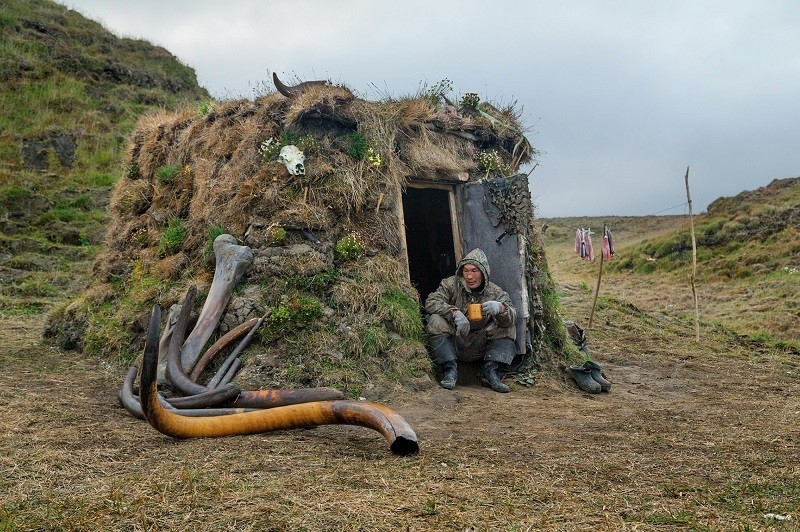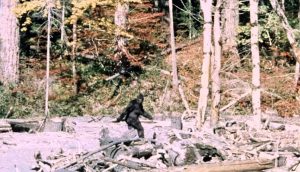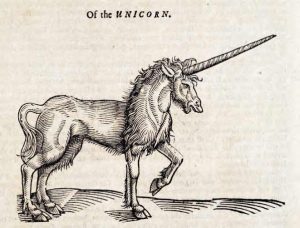The Mammoth Tusk Hunters Of Siberia
In a lot of people’s brains, “mammoths” are stored in the same slot as “dinosaurs.” In reality, mammoths appeared on earth around 5 million years ago, a solid 60 million years after the last of the dinosaurs wheezed their final breath.
The majority of mammoths died out relatively recently, just 4,500 years ago.
As average global temperatures climbed and sea levels rose, the last of the mammoths were marooned on what became Siberian islands
Some of the final stragglers made their home on Wrangel Island; these individuals are thought to have survived until 3,700 years ago – that’s after the pyramids had been built.
Because the mammoths lived and thrived in Siberia, they left a great number of skeletons behind. And, because of the lack of humans and the frigid temperatures, many of the mammoth’s tusks can still be found littered about the place.
The following photos depict folk who search for mammoth tusks in Siberia and make a living by carving them and selling them on.
Some of the tusks are washed up by the sea, some are uncovered by rivers and streams; others are stuck fast in swampy terrain, and, weighing over 100 kg, can take days to dig out of the dirt.
These mammoth tusk hunters unearth and flog an estimated 20-60 tonnes of mammoth tusk per year. That gives you a small idea of just how many mammoths must have strolled across these Siberian wastelands.
As an aside, a few years ago I spoke with a man that runs a stall selling fossils and dinosaur models. He told me that he used to sell carved mammoth tusk items, but he had to stop because people associated it with elephant ivory.
Apparently, people got up in arms over the mammoth ivory so regularly that he decided to stop stocking it. People are strange. But then, I guess the argument is that it might stimulate elephant ivory sales. Seems a little dar fetched to me, though.
MORE FROM SIBERIA:

